
Gyusuji Doteni : Beef tendon and radish simmered in miso (どて煮:牛すじと大根のみそ煮)
What kind of dish is Gyusuji Doteni (Beef Tendon Miso Stew)??
Doteni is a type of dish called “motsuni.” (“Motsu” refers to pork or beef innards, and “ni” refers to simmering.)
If “motsu” is replaced with gyusuji (beef tendon), the dish is called “doteni.”
Motsuni is a famous Nagoya local dish, typically made with pork offal and mame miso (soybean miso).
Nagoya is a prefecture known for its mame miso (soybean miso) production.
Miso typically loses its flavor and aroma when heated for long periods of time, making it unsuitable for stews.
However, mame miso (soybean miso) is more mature than regular miso, allowing it to retain its flavor even when simmered for long periods of time.
Mame miso is ideal for this dish because its rich flavor and aroma subtly masks the strong odor of motsu (pork or beef innards) and gyusuji (beef tendon).
I prefer gyusuji to pork motsu, so I used gyusuji in this recipe.
This dish features an appealing combination of melt-in-your-mouth beef tendon, daikon radish, and plump konjac, so be sure to give it a try.
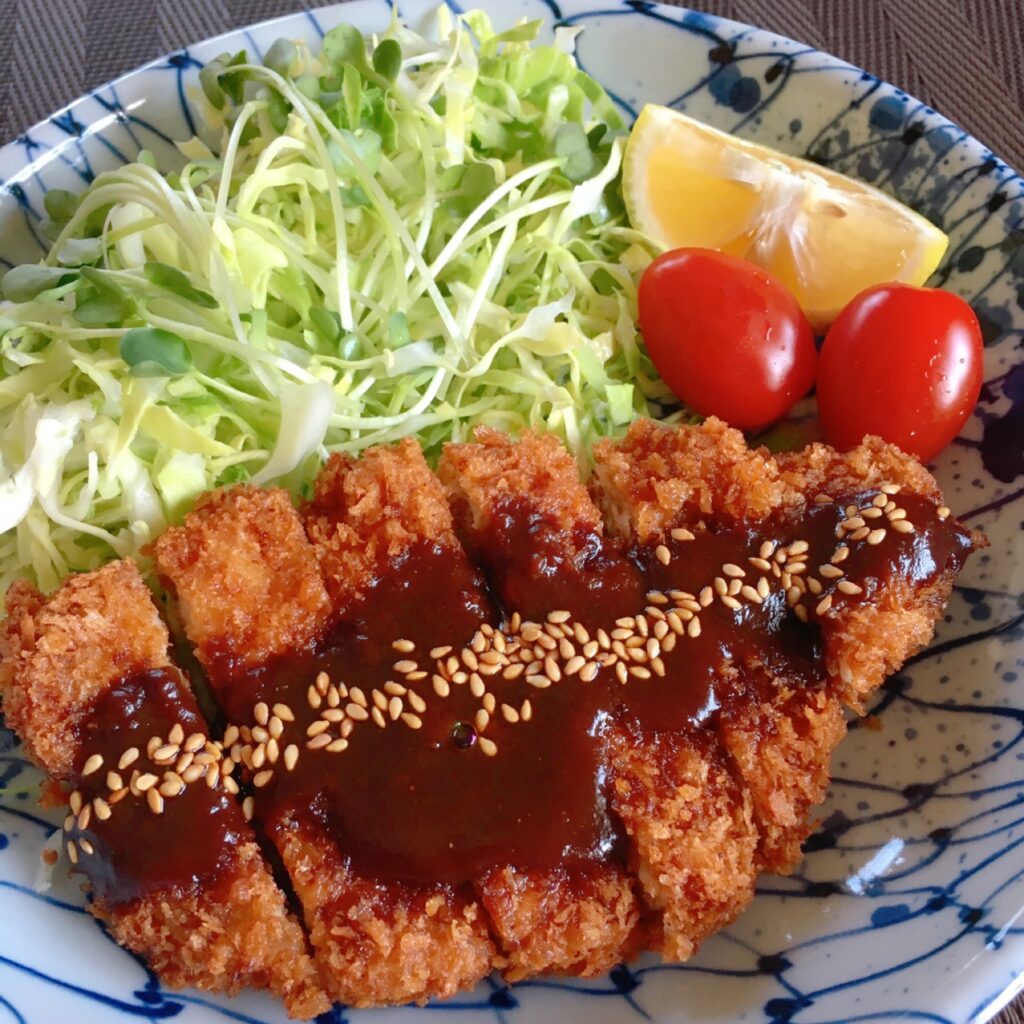
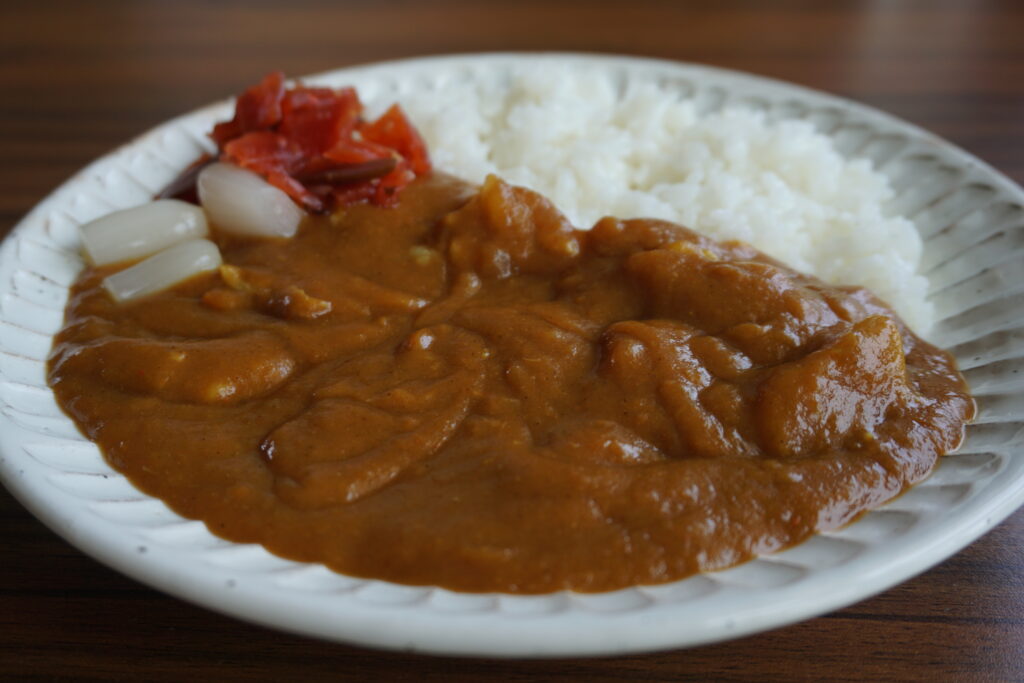
NUTRITION FACTS : Gyusuji Doteni (Beef Tendon Miso Stew)

TOTAL NUTRITION VALUE
- 1391 Calories Protein 151.1 g Total Fat 33.6 g Total carbohydrates 125.0 g Sodium 14.0 g
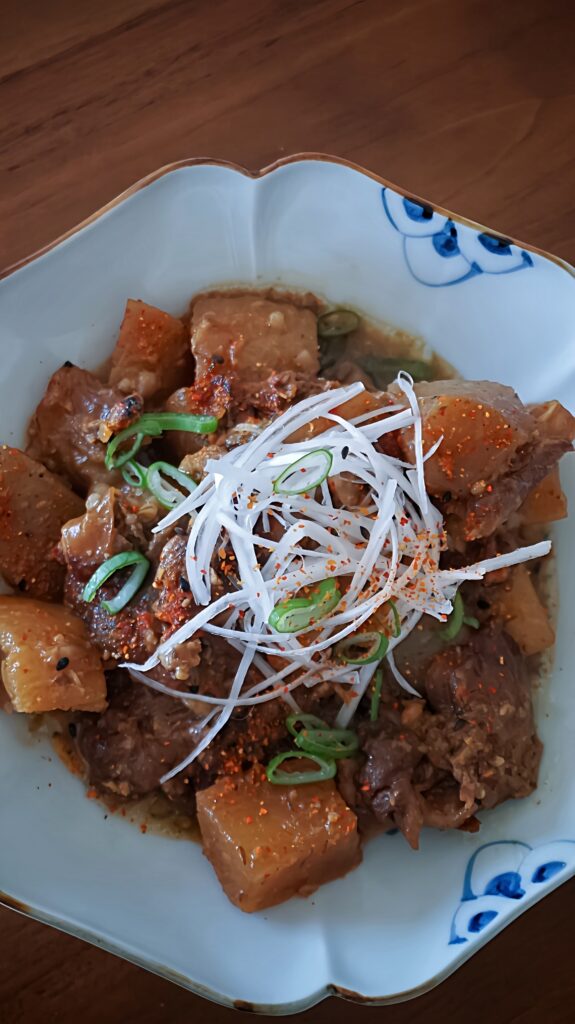
INGREDIENTS : Gyusuji Doteni (Beef Tendon Miso Stew) (5SERVINGS)
You can also use pre-processed beef tendons (boiled and dried). In that case, you should also boil them once before using.
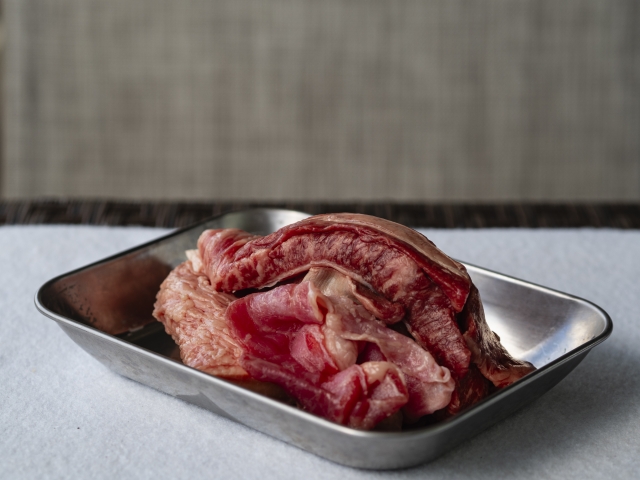
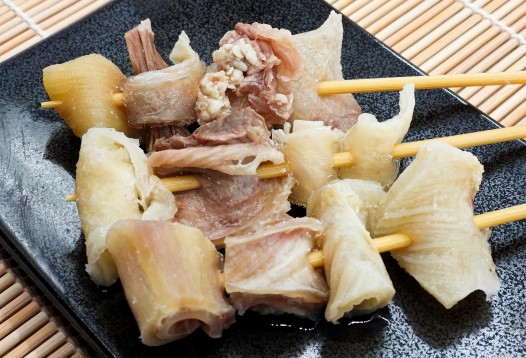

- Pre-boiling the beef tendons:
- Gyusuji (Use your favorite part of beef tendon.) (700g)
- Hot water (1500ml)
- Green part of white leek (1 stalk)
- Sliced Ginger (8g)
- Water (500ml)
- Konjac (250g)
- Daikon radish (650g)
- Seasoning
- Sugar (50g)
- Sake (30g)
- Mirin (50g)
- Hatcho miso (100g)
- Soy sauce (15g)
mame miso = soy bean miso = hatcho miso
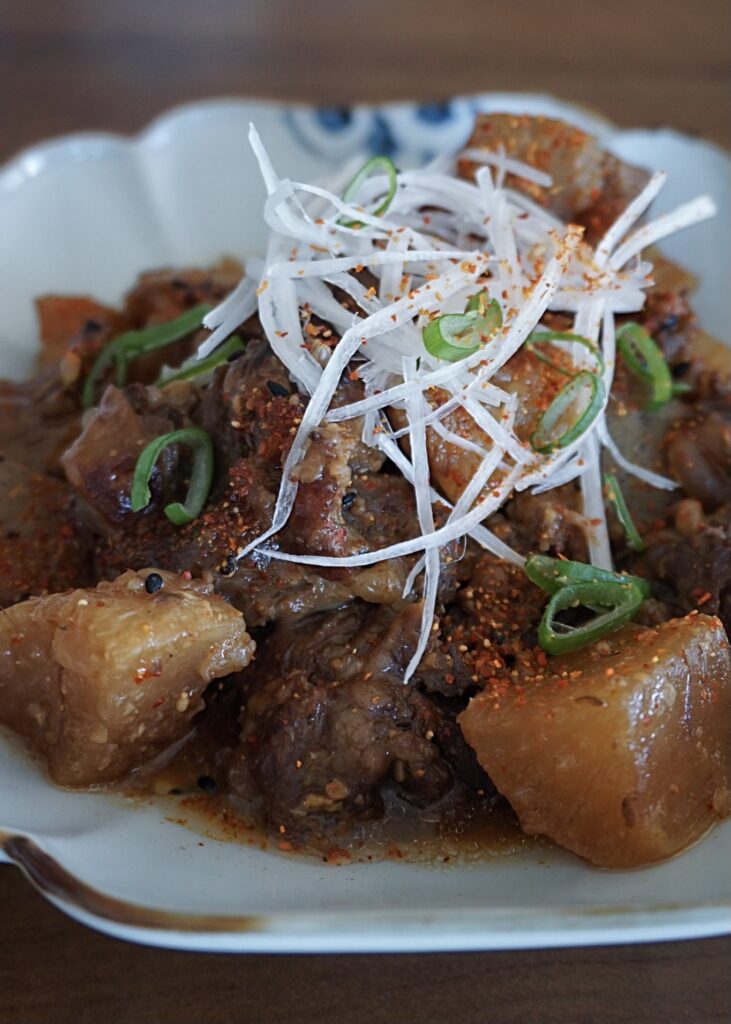
How to make Gyusuji Doteni (Beef Tendon Miso Stew)
- Separate the white and green parts of the white leek
- Scrape the skin off the ginger with a spoon and slice it.
- Wash the beef tendons and boil them in boiling water until they change color.
- Wash the beef tendons under running water. (the weight after boiling was 500g).
- Put the beef tendons, sliced ginger, green parts of the white leek, and water in a pressure cooker and pressure cook for 20 minutes.(When processing beef tendons, you can remove the odor by boiling them with Japanese leek or ginger. This dish is strong flavored with mame miso, so it is said that you can omit the Japanese leek and ginger.)
- Cut the boiled beef tendons into bite-sized pieces.
- Cut the konnyaku with a spoon and soak in boiling water for 5 minutes. The reason for soaking it in hot water is to flush out the lye contained in the konnyaku. The more cut surfaces there are, the easier the flavor will penetrate into the konnyaku.
- Wash the daikon, peel it, and cut it into 5cm cubes.
- Put all the ingredients (beef tendons, daikon, konnyaku, sugar, sake, mirin, miso, soy sauce) in a pressure cooker and pressure cook for 2 minutes.
- Once the pressure is released, open the lid and simmer for a few minutes.

By the way, a dish made by simmering beef tendon and konjac in soy sauce is called “suji kon.” Udon noodles topped with “suji kon” are called “bokkake udon.” Using doteni as a topping for udon instead of sujikon is also a recommended way to eat doteni.
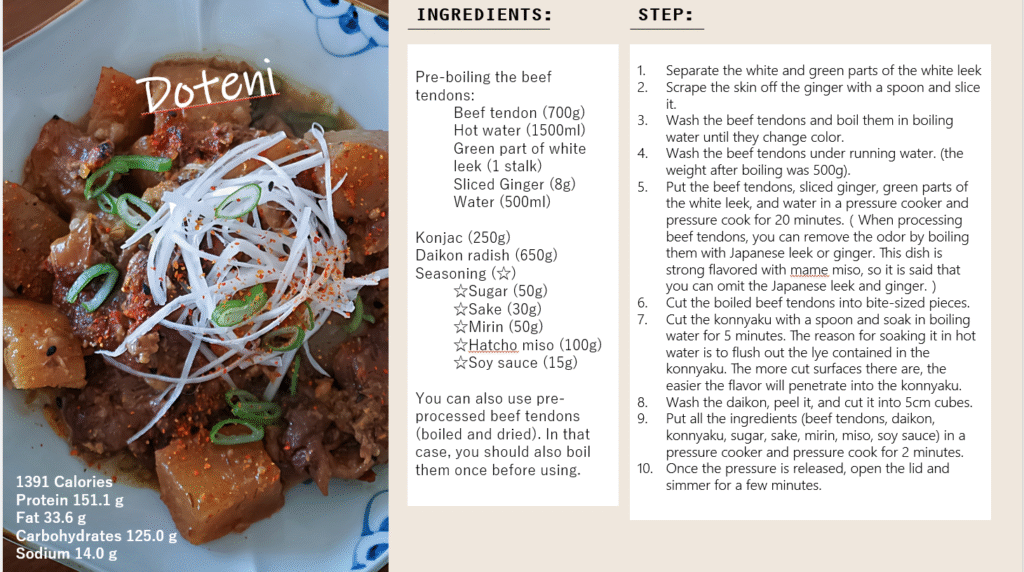
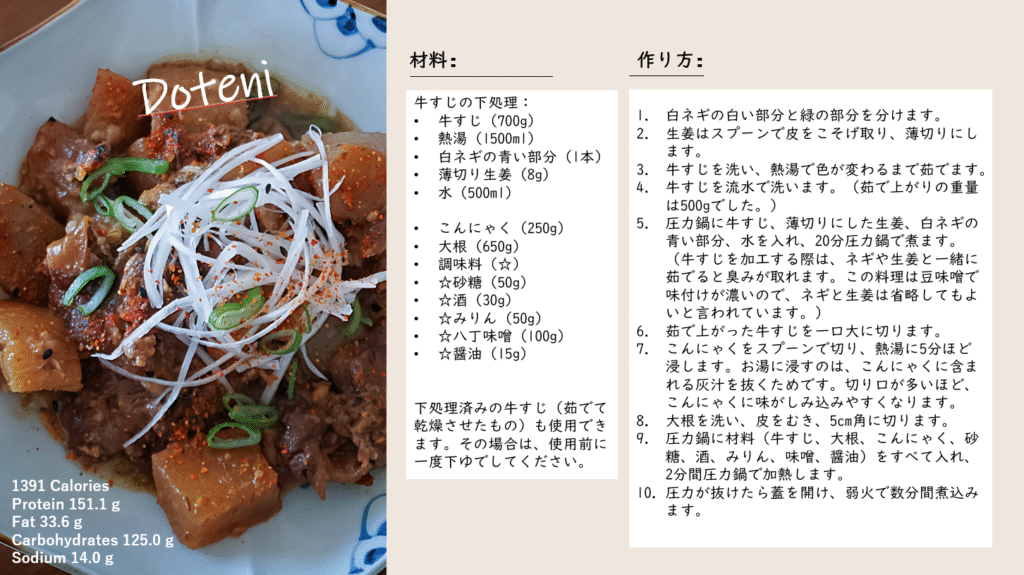
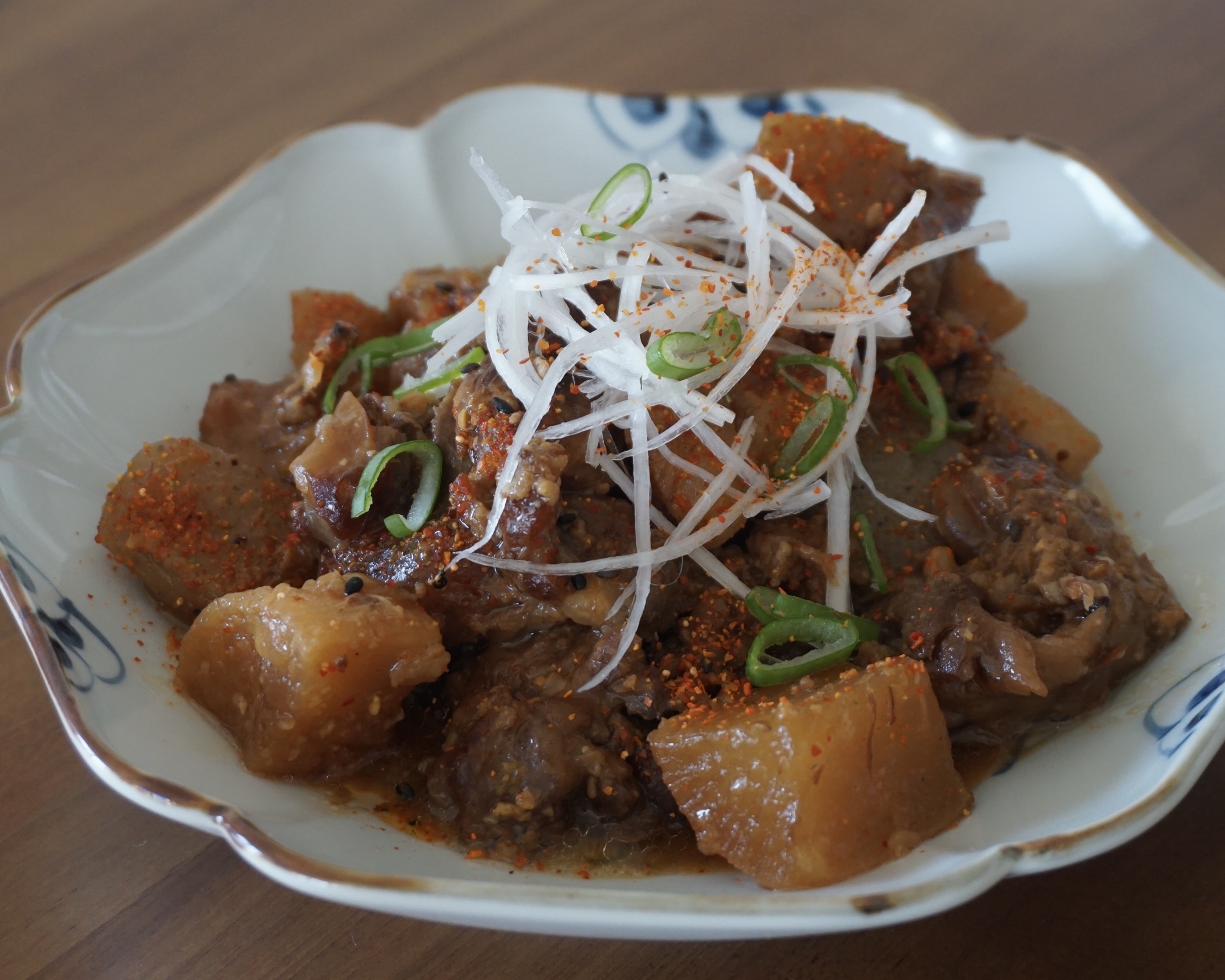
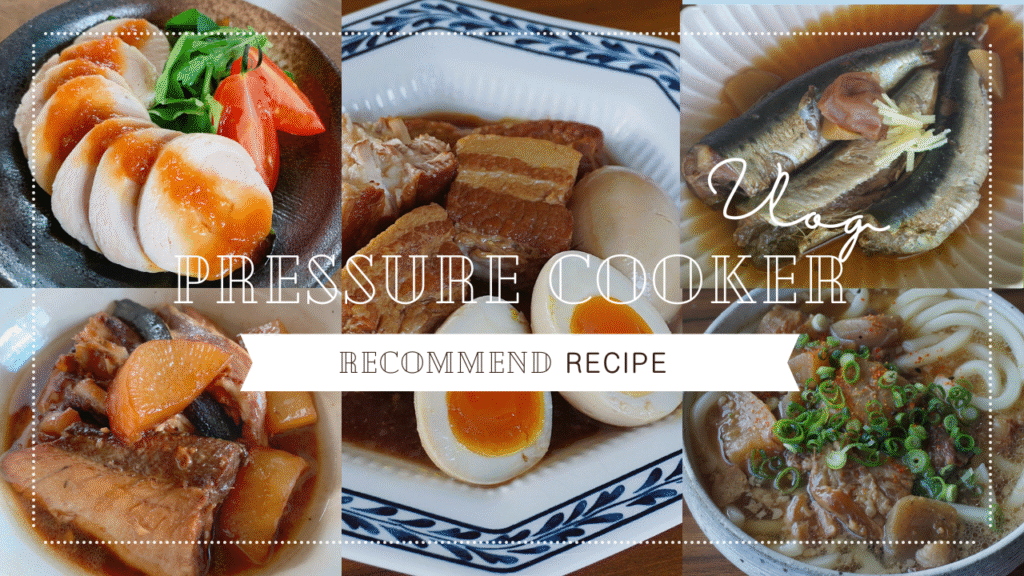


コメント